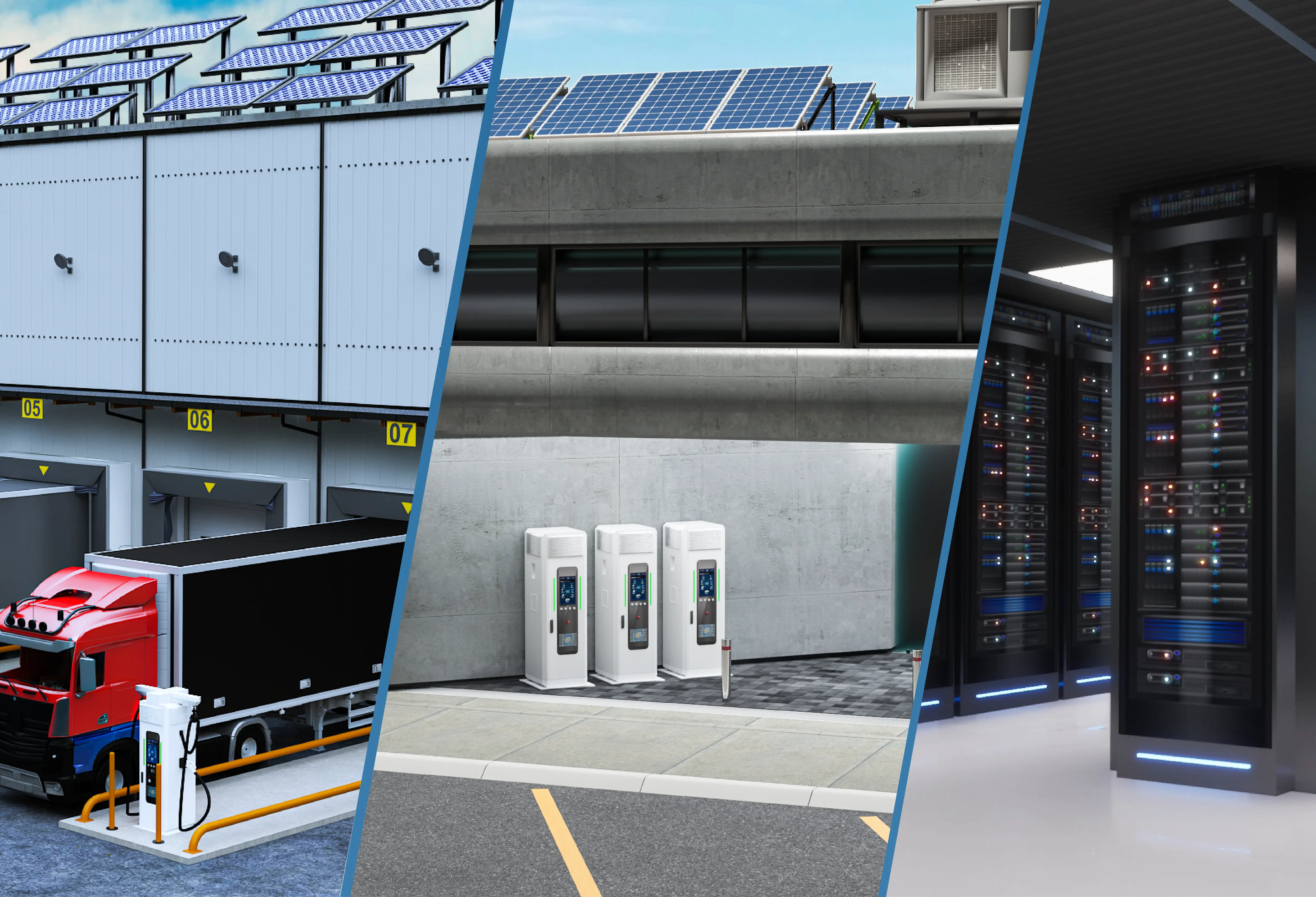For years, solid-state transformers (SSTs) have been seen as a game-changing technology—always “five years away” but never quite ready for deployment. The promise has been clear: compact, reduced weight, intelligent power systems that deliver higher efficiency, programmable control, and seamless integration of distributed energy. SSTs offer a smart, standardized hardware platform that enables software-like configurability for global deployments in any market. Until now, technical limitations, high component costs, and uncertain market signals kept SSTs in the realm of research and pilot projects.
That’s changed.
And DG Matrix is the team bringing SSTs to commercialization.
Here’s why the timing, technology, and customer value have finally aligned—and why solid-state transformers are ready to reshape the energy landscape.
1.Market Timing: Infrastructure Under Pressure
The world’s energy demands are surging, and traditional infrastructure can’t keep up.
From AI datacenters demanding gigawatts of power to the electrification of fleets, buildings, and industrial sites, the grid doesn't have the flexibility to deliver in the required timeframe. These trends aren’t speculative; these trends are happening now and accelerating.
Legacy infrastructure solutions are too slow, too bulky, and too inflexible to meet the demands of today’s energy transition. Utilities and enterprises alike are looking for solutions that can deploy faster, operate more efficiently, and scale globally.
SSTs, once seen as a next-decade technology, are now a this-decade necessity enabling a plug-and-play micro-utility that can be co-located with load centers. And the market is finally ready.
2.Technology Advancements: Silicon Carbide and Beyond
Until recently, the components needed for SSTs—like wide-bandgap semiconductors—were too expensive or underdeveloped for commercial use. That’s no longer the case.
Silicon carbide (SiC) has transformed what’s possible in power electronics, enabling higher efficiency, higher switching frequencies, and greater power density in compact designs. Combined with advancements in thermal management, digital control systems, and modular packaging, SSTs can now meet the performance and reliability standards required by mission-critical customers.
These aren’t just lab wins—they’re production-ready technologies that enable smarter, smaller, and more scalable power platforms.
3.Multi-Port SSTs: More Complexity, More Value
Conventional SSTs have historically been single-input, single-output devices—fine for niche applications, but not transformative and limited in the value delivered to the customer.
What unlocks true value is a system that can simultaneously manage multiple AC and DC sources and loads, including the grid and renewables, enable dynamic power sharing, and consolidate what used to be 10-20+ discrete components into one programmable platform. DG Matrix is pioneering the ultimate version of the solid-state transformer: the multi-port solid-state transformer, fundamentally changing the game by delivering unprecedented value to the customer.
By building the world’s first multi-port solid-state transformer, DG Matrix delivers not just efficiency and power density—but flexibility, simplicity, and significant cost savings with a plug-and-play solution for global applications in AI datacenters and electrification.
Better economics. Better outcomes for customers. Better tech.
The Time Is Now
The convergence of market urgency, component readiness, and a productized platform makes this the decade for SSTs.
The vision for SSTs is much broader than hardware; it’s for an app-store-like ecosystem where the hardware provides a foundation for the deployment of near-limitless software capabilities.
Think: the iPhone for electrification.
With the world’s largest SST engineering team, deep partnerships with global players, and early deployments already underway, we’re setting the standard for what power infrastructure will look like in the age of electrification and AI.
The energy future is modular, intelligent, and built on solid-state foundations.
DG Matrix is making it real.



